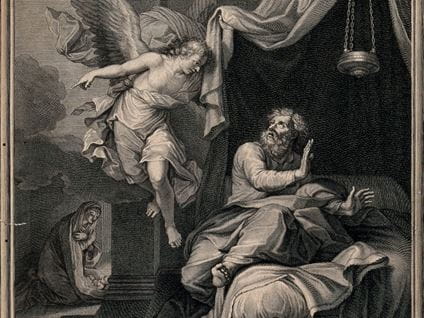Introduction:
In today's post I want to introduce the reader to the main Jewish Festivals we find in the Bible. Recently I began a new teaching series in our church on this topic.
A number of chapters and sections in the Bible details each of them or summarize all of them. The third book of the Bible, Leviticus, gives us the seven major Jewish festivals in Leviticus 23. Moses writes in Leviticus 23:1-3
“The Lord spoke again to Moses, saying, 2 “Speak to the sons of Israel and say to them, ‘The Lord’s appointed times which you shall proclaim as holy convocations—My appointed times are these: 3 ‘For six days work may be done, but on the seventh day there is a sabbath of complete rest, a holy convocation. You shall not do any work; it is a sabbath to the Lord in all your dwellings.”
The phrase at the end of Leviticus 23:2, “appointed times” (mo-ed = מוֹעֲדֽ ) has to do with "meeting times", or "appointed seasons". The Jewish festivals or "appointed times" tell us not only about what God did for Israel in the Old Testament, but also point ahead to Jesus in His coming in the New Testament.
Ed Hindson and Gary Yates in their volume "The Essence of the Old Testament - A Survey", summarize the presentation of the seven major Jewish Feasts in Leviticus 23:
"The nation could experience sanctified obedience by appearing before the Lord regularly to worship (the Sabbath) and celebrate various feasts that would remind them of their covenant relationship with Him."
How many of us have old photo albums, or have memories stored on social media that remind of us important events? The Jewish Festivals commemorated the LORD's faithfulness. But they also pointed ahead to the Lord Jesus Christ.
Jesus Himself stated in Luke 24:44
“Now He said to them, ‘These are My words which I spoke to you while I was still with you, that all things which are written about Me in the Law of Moses and the Prophets and the Psalms must be fulfilled.”
One of the ways we find the Hebrew Bible (another name for what Christians call "the Old Testament") pointing to Jesus the Messiah is by the individual and combined messages of the main Jewish Feasts.
In all, there are seven main feasts mentioned in Leviticus 23 and in other places (most notably Numbers 28 and Deuteronomy 16). We also note there are two other main Jewish feasts or festivals: Purim and Hannukah (also known as "the feast of dedication").
As I mentioned already, the word translated “appointed times” in the opening verses above means “to meet, to appoint”. It first appears in Genesis 1:14 to describe why God created the Sun, moon, and stars “signs, seasons, days, and years”. God had already included methods for marking off appointed times in history by way of cosmic phenomena like stars, the moon, and the sun.
Again, we can also think of these times and places where God made changes in people's lives (that is, if we are followers of Jesus in saving faith, or perhaps we can look back and see how He was at work before we were brought to faith in Jesus). Such celebrations were meant to remind the people to not forget what God had done.
Also, as already mentioned, the Jewish Feasts pointed ahead to what God intended to do through the coming of Messiah. What I want to do now is simply depict the Feasts, their general meaning, and say something about what they tell us about Jesus and prophetic events.
1. Importance of the feasts: To relate, revere, remember.
A. God wants His people to relate to Him.
God's covenants were intended for relationship with His people. The festivals were visible dramatizations of that reality. Deuteronomy 16:16 "Three times in a year all your males shall appear before the Lord your God in the place which He chooses, at the Feast of Unleavened Bread and at the Feast of Weeks and at the Feast of Booths, and they shall not appear before the Lord empty-handed." See also 2 Peter 3:18.
B. God wants His people to revere Him.
We too often in modern society (and I'm mainly talking about our American Church culture) don't have a fear or reverence of God. The Christian is to live their life between two guardrails: confident access to God through Jesus Christ and carefulness in how one conducts themselves by the Holy Spirit. Numbers 28:1-2 "Then the Lord spoke to Moses, saying, 2 “Command the sons of Israel and say to them, ‘You shall be careful to present My offering, My food for My offerings by fire, of a soothing aroma to Me, at their appointed time."
C. God wants His people to remember Him.
God's people today can get so busy with life, even service to God, that they can plan Him to the edges of life. It was the author Oswald Chambers that once noted how our number one competition for our fellowship with God is our service to God. We ought never forget that were it not for the Lord Jesus, we would be incapable of anything (Read John 15). Thus, Leviticus 23:43-44 "so that your generations may know that I had the sons of Israel live in booths when I brought them out from the land of Egypt. I am the Lord your God.’” 44 So Moses declared to the sons of Israel the appointed times of the Lord."










